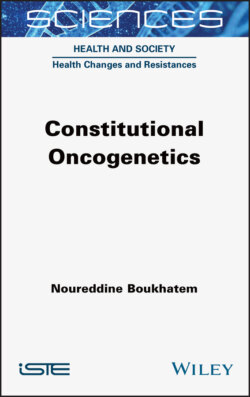Читать книгу Constitutional Oncogenetics - Noureddine Boukhatem - Страница 21
1.4. Tumors 1.4.1. Breast
ОглавлениеIn terms of histologic types, most breast cancers associated with BRCA1 are of no special type (NST), involving invasive ductal adenocarcinoma and having higher grade than sporadic breast cancers. In terms of molecular subtypes, the majority of BRCA1 breast cancers can therefore be classified as basal-like.
DEFINITION.– Adenocarcinoma is a tumor that begins in glandular (secretory) cells. Glandular cells are found in the tissues that line certain internal organs and produce and release substances in the body, such as mucus, digestive juices, or other fluids. Most of the cancers in the breast, pancreas, lung, prostate and colon are adenocarcinomas.
Like BRCA1-associated tumors and sporadic carcinomas, BRCA2-associated breast cancers are predominantly NST invasive ductal adenocarcinomas with moderate to poor differentiation. However, the overexpression of the estrogen receptor, progesterone receptor, CK8 and CK18 allow BRCA2 tumors to be classified in the luminal molecular subtype, with the vast majority belonging to luminal subtype B.
Most BRCA1 carcinomas have a basal phenotype and are high grade, highly proliferative, estrogen receptor negative and HER2 negative mammary carcinomas characterized by the expression of basal markers such as basal keratins, P-cadherin and epidermal growth factor receptor (EGFR). BRCA1 carcinomas frequently carry p53 mutations. The basal-type phenotype is only occasionally encountered in BRCA2 carcinomas, which tend to be estrogen and progesterone receptor positive. Loss of heterozygosity of BRCA1 and BRCA2 is found in almost all BRCA1 and BRCA2 carcinomas, respectively. Both genotypes have a low frequency of HER2 overexpression/amplification. Other reports suggest that BRCA2-related tumors include excess lobular and tubulo-lobular histology.
In summary, the histological characteristics associated with the pathogenic variants of BRCA2 have been inconsistent.
Concerning the histological subtype, no correlation has been found with the most frequent germline variant in northern Europe, 1100delC of CHEK2. However, it has been shown that in Poland, where there are two other founder variants with a higher prevalence than 1100delC, the I157T mutation is associated with the lobular carcinoma subtype.
An examination of pathological features in 10 families with pathogenic RAD51C mutations revealed that nine patients (47%) developed carcinomas of the ovary and 12 (63%) developed carcinomas of the breast. This review also noted that, as a group, the RAD51C-associated mammary carcinomas were diagnosed at an early stage (89%) and were hormone receptor positive, HER2 negative, moderately differentiated invasive ductal carcinomas (IDC) and NST (80%).
In addition, RAD51C breast carcinomas were comparable to BRCA2-associated breast carcinomas in their lack of specific pathologic features and their tendency to be ER positive and HER2 negative, differing only in the Ki-67 proliferation index, which is significantly higher in BRCA2 tumors.
